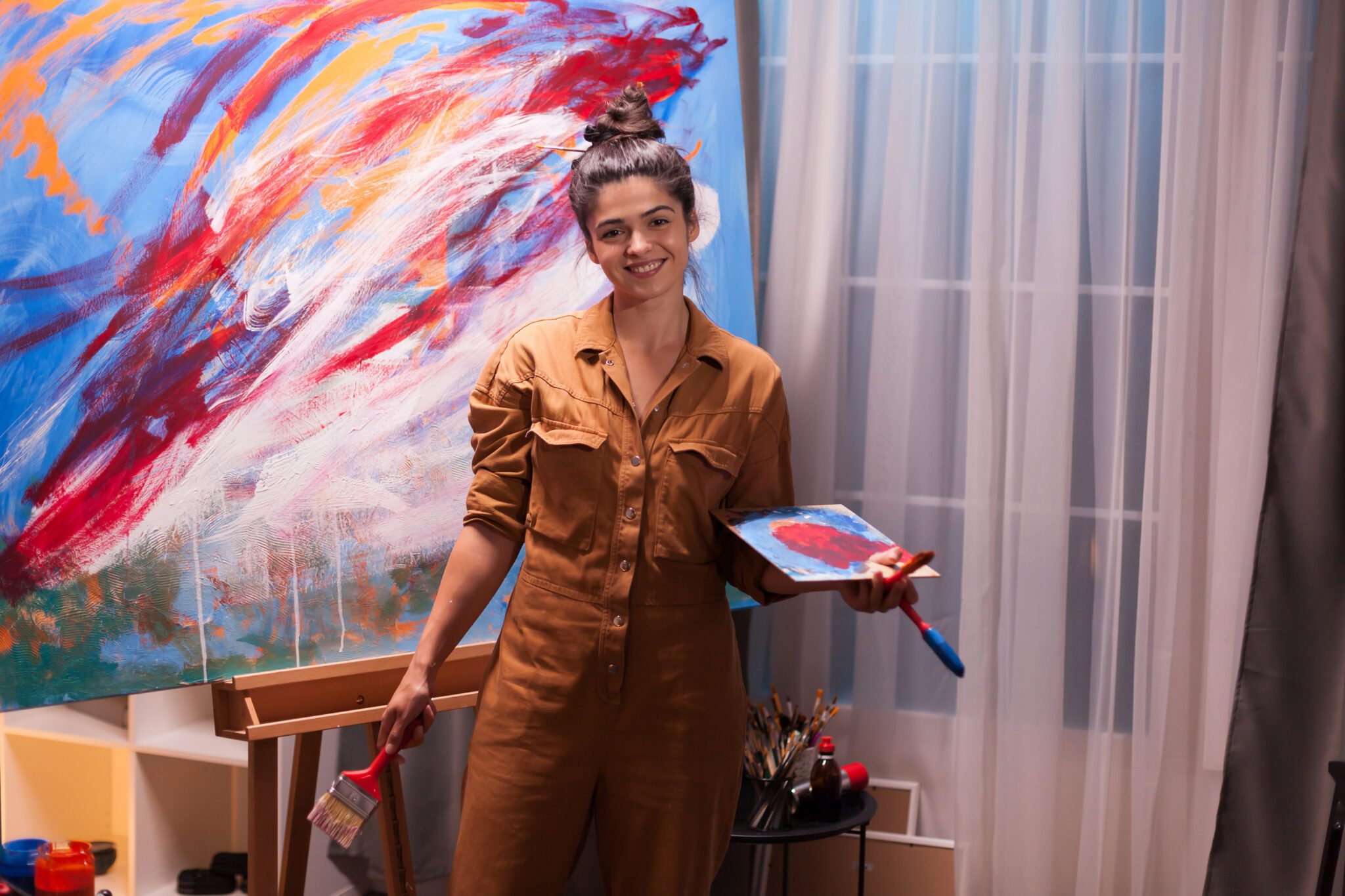Title: Unleash Your Creativity with Spattering and Splattering Techniques
Introduction:
Welcome to the fascinating world of spattering and splattering techniques! If you’re looking to add dynamism, texture, and a touch of whimsy to your paintings, this is the perfect technique to explore. Spattering and splattering involve creating controlled or random patterns by flicking or splashing paint onto your canvas. In this guide, we’ll take you through step-by-step techniques to help you master this exciting approach. Additionally, don’t forget to explore more free resources on our website at https://urartstudio.com for further inspiration and guidance.
Step 1: Gather your materials
Before diving into the creative process, gather the necessary materials. You’ll need paint (watercolor, acrylic, or ink), a variety of brushes (round brushes or old toothbrushes), a palette or mixing surface, water, paper towels or rags, and, of course, your canvas or paper.
Step 2: Prepare your workspace
Ensure you have a well-lit and organized space where you can freely move and work comfortably. Cover your workspace with old newspapers, drop cloths, or plastic sheets to protect it from stray paint splatters.
Step 3: Experiment with consistency and colors
Spend some time experimenting with your paint’s consistency. Depending on the desired effect, you can dilute your paint with water to achieve a more fluid consistency or use it directly from the tube for thicker splatters. Likewise, try mixing different colors to create harmonious or contrasting palettes that suit your artistic vision.
Step 4: Control your spatters
To create controlled spatters, dip a round brush or old toothbrush into your paint. With your thumb placed over the bristles, gently pull back and release to flick the paint onto your canvas. Vary the angle, distance, and pressure to achieve different effects—closer flicks produce finer dots, while a greater distance creates larger splatters.
Step 5: Embrace randomness for splattering
Splattering involves a more spontaneous and random approach. Load a brush with paint and use your thumb to flick or tap the brush against your other hand, directing the splatters towards your canvas. Alternatively, you can use an old toothbrush to achieve a broader, more diffused splatter effect.
Step 6: Layer and build up your composition
Consider starting with lighter colors and gradually layering darker shades or vice versa to create depth and dimension. You can also experiment with overlapping spatters to achieve complex, textured effects. Allow each layer to dry before adding another to prevent muddying or smudging of colors.
Step 7: Experiment with different tools and techniques
Don’t limit yourself to brushes and toothbrushes—explore unconventional tools! Try using a sponge, straw, palette knife, or even your fingers to create unique spattering effects and textures. Embrace experimentation and let your creativity flow.
Step 8: Step back and evaluate
Regularly step back from your painting to evaluate the overall composition and distribution of spatters. Adjust as needed, adding or toning down areas to create a balanced visual experience.
Step 9: Finishing touches
Once your composition is complete and has dried fully, step back one final time to assess if any additional details or touch-ups are required. This is also the perfect opportunity to sign your masterpiece and feel a sense of accomplishment.
Remember, practice makes perfect, so don’t be discouraged if your initial attempts don’t turn out as expected. The beauty of spattering and splattering lies in their unpredictability, allowing for happy accidents and unique outcomes.
Explore our website, https://urartstudio.com, for more resources, tutorials, and inspiration to help you further enhance your artistic skills. Keep experimenting, pushing boundaries, and most importantly, have fun in your creative journey!



Leave a Reply
You must be logged in to post a comment.